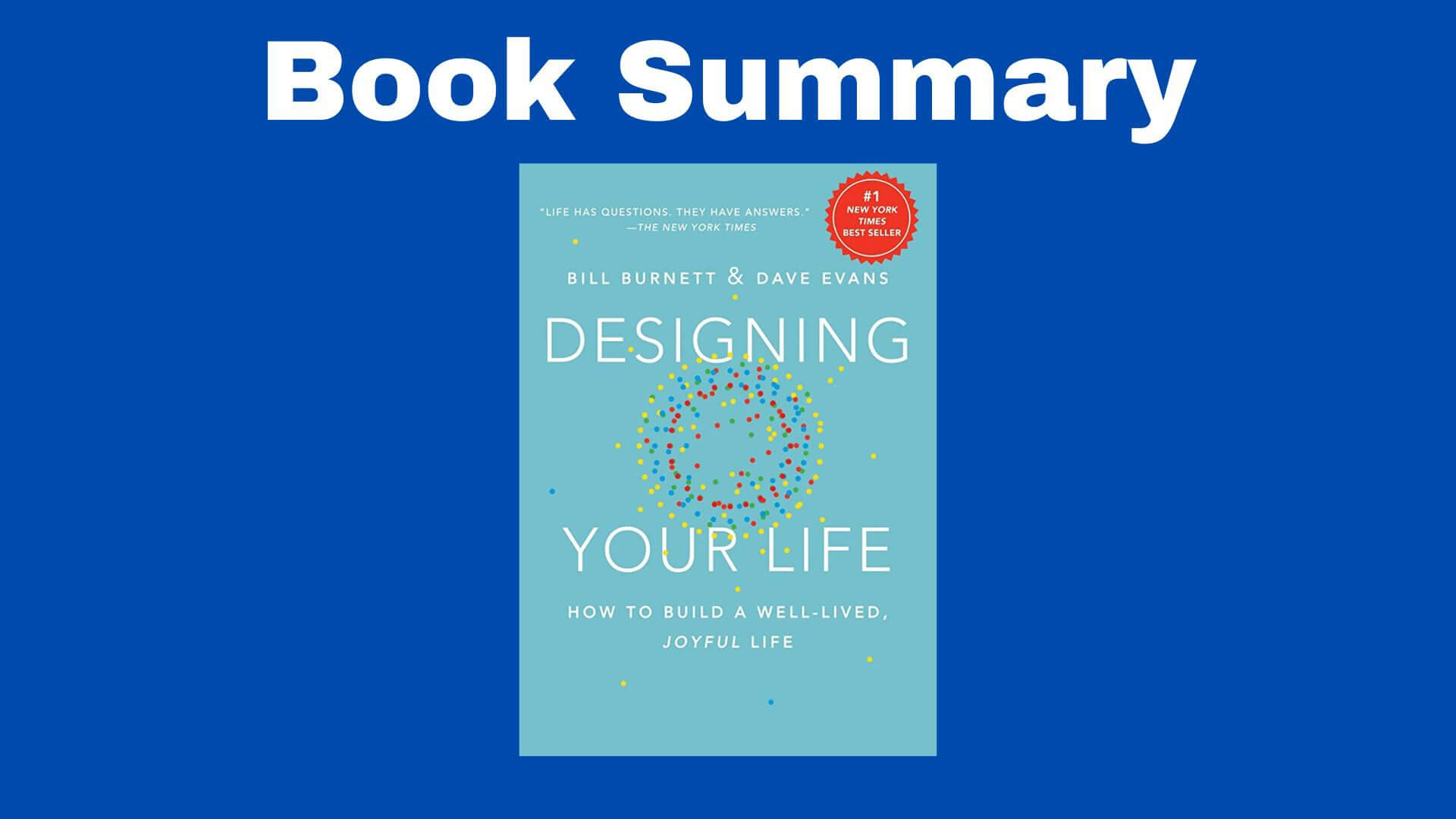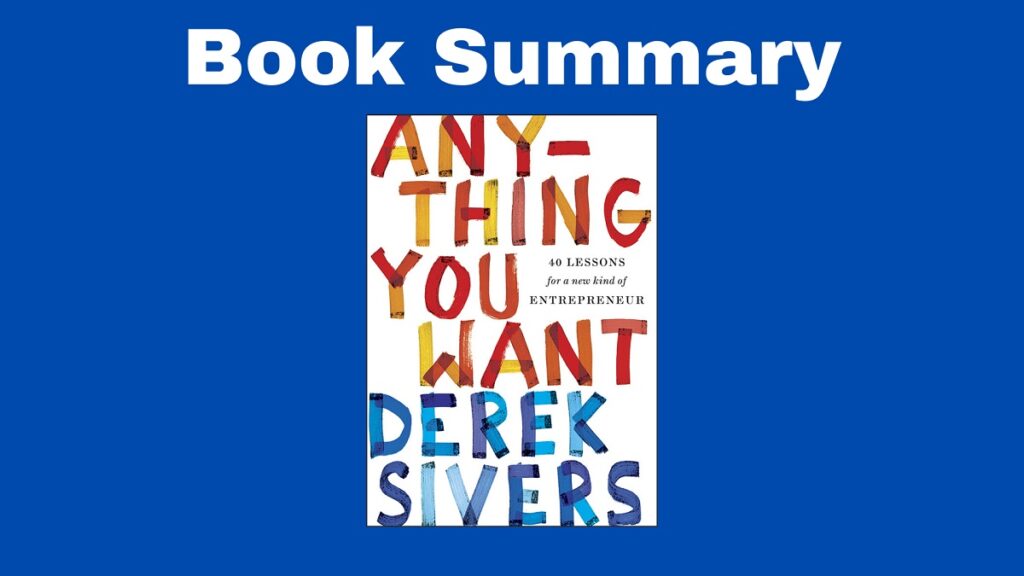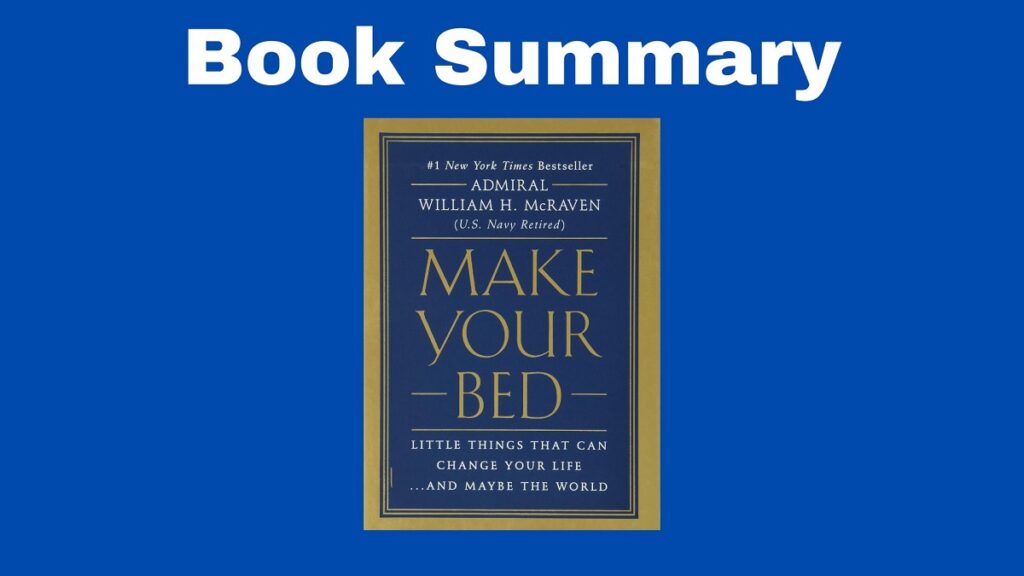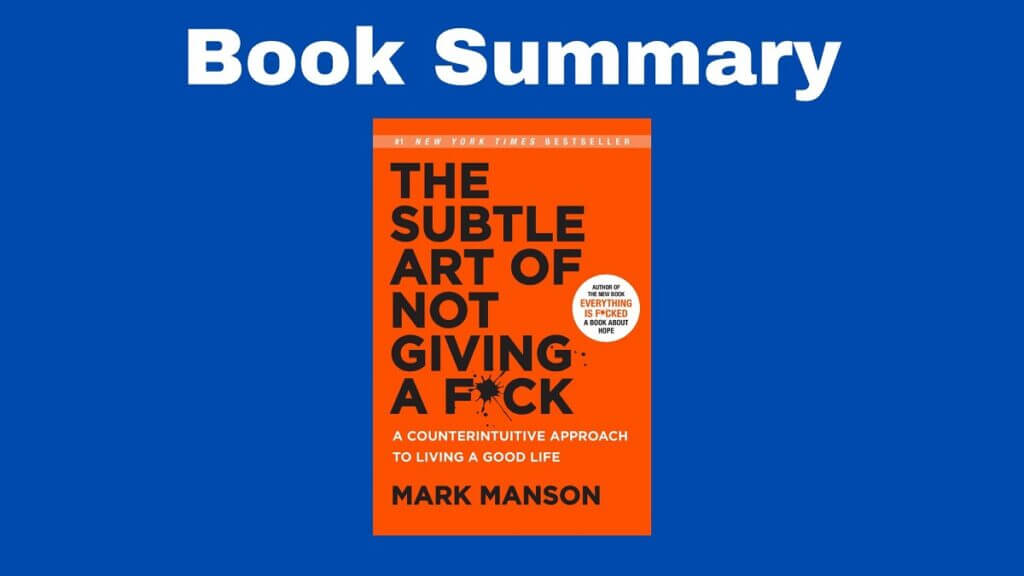The Book in Three Sentences
In this book summary of Designing Your Life, you’ll learn to approach your life as something you carefully design rather than something you do by default. Everything around us has been designed by someone else, so how about approaching your life as a problem you can solve too? Interestingly, the discipline of design thinking can help us create a meaningful and fulfilling life.
Designing Your Life Summary
Introduction: Life by Design
Some choices in life we make by default, but this has serious consequences. To be happy, you have to design a life you love. Everything around you has been carefully designed to solve some sort of problem. By using the same principles that designers use to create elegant cars, innovative devices, comfortable chairs, and liveable houses, you can craft an enjoyable life you’re proud of and happy with.
When designing your life, you must understand that there isn’t one way to do it. Having goals in mind is great, but they give you vague directions. Moving forward, you need to know five mindsets that will help you design your life:
- Curiosity: this is seeing everything with new eyes so that you can identify opportunities.
- Bias to action: this means trying stuff instead of just thinking about things.
- Reframing: this is a strategy for getting unstuck and finding the right problems.
- Awareness: this is accepting that designing your life is a process where you’ll make many mistakes.
- Radical collaboration: some of the best ideas you get might come from someone else, so don’t be afraid to ask for help.
Designing your life isn’t as simple as finding your passion. Finding your passion isn’t actionable, so even if you know what your passion is, you won’t know how to move forward. Another problem with the idea of “finding your passion” is that most people have various interests, and choosing just one is extremely difficult for them. To design your life, you must prototype, try things, and determine which of the potential solutions resonate with you.
Chapter 1: Start Where You Are
A well-designed life is the result of finding the right problems and then solving them. Seeing life as a series of problems isn’t a negative thing because everyone has problems. The most important thing is to determine which problem to focus on. Problems that aren’t actionable aren’t considered problems. These situations, circumstances, or facts of life are cumbersome, but they can’t be solved. These are what some call gravity problems. There are two types of gravity problems: totally inactionable (like gravity) and functionally inactionable (this is a hard problem that has a high risk of failure but one you can eventually solve with effort). Accept totally inactionable problems and move on because, otherwise, you’ll get stuck on something you can’t succeed at.
We can break down life into four areas: health, work, play, and love.
- Health: this is being well emotionally, physically, and mentally
- Work: this is an adventure you go on and you may be paid for it or not
- Play: these are the things you do for joy
- Love: there’s no one definition for love and it takes many forms, but it refers to connecting with others
The health/work/play/love dashboard is an exercise to determine which area of life you should be focusing on first. This involves assessing the state of each area as if those areas were gauges in a car’s dashboard. Which ones are full and which ones are empty?
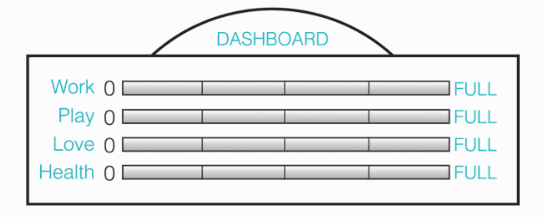
Once this exercise is over, you need to identify and address any “red lights”. These are any areas where you’re running empty.
Chapter 2: Building a Compass
When it comes to life, most people worry, analyze, and speculate, but those aren’t the tools for the job. What most people need is a compass that has a Workview and a Lifeview. A Workview helps you figure out what role work plays in your life. A Lifeview refers to how you see the world (this includes your opinions on other people, the community, your ideas around money, success, and more). Throughout your life, both your Workview and Lifeview will change.
The worst thing you could do is use someone else’s compass to guide your own life, so having your own Workview and Lifeview is to design your own compass. Our goal is to achieve coherency and we do that by connecting three things:
- Who you are
- What you believe
- What you’re doing
As long as those three things connect with each other, your life will be coherent.
For your Workview, write a 250-word paragraph where you discuss the importance of work and what it means to you. Focus on why you work, not on what kind of work you want. For your Lifeview, you also want to write a 250-word reflection. In this case, you’re going to focus on your values and perspectives that help you understand life. Why are you here? What’s the meaning of life? Once you have both paragraphs, try to determine how they complement one another or how they clash. The idea is to make some editing so that both your Workview and Lifeview are in harmony with one another. This exercise gives us our “True North”, a course we must follow.
Chapter 3: Wayfinding
By following a path that someone chose for you, you let other people determine your direction in life. Eventually, you’ll run into problems: you’ll feel bored, unsatisfied, and confused. Wayfinding refers to the art of determining a destination before you get there. When it comes to wayfinding, you need need a compass and a direction. With these tools, you can make an educated guess about where you’re going to end up. There are two important clues that will help you: engagement and energy.
Engagement refers to the activities that energize you. The extreme version of engagement is flow, the state where you lose track of time because an activity fully engages you. Energy is the resource we need for physical and mental activities.
With all of this in mind, you should start a Good Time Journal. This journal has two parts: an Activity Log where you record when your level of engagement and energy and Reflections where you reveal your findings. The idea of this exercise is to find as many motivating tasks as possible. After a few days, you’ll have enough entries to draw some conclusions. The AEIOU method can help you out here:
- Activities: what were you doing?
- Environments: where were you?
- Interactions: who were you with?
- Objects: what were you using?
- Users: who else was there?
Chapter 4: Getting Unstuck
When you spend most of your time doing activities that don’t engage or energize you, you feel stuck. This usually happens when people need a job and look for the one they can get just because it’s within their grasp. Being stuck isn’t a problem and most people have to confront this on a regular basis. If anything, being stuck is an excuse for creativity.
When you’re stuck, you need ideation which means having lots of ideas. In the modern world, it’s rare that we can solve a problem with one idea. There’s more than one design for your life, you happen to be living one of those designs. So you should generate a lot of ideas because quantity will lead to quality. Embrace these two philosophies of designers:
- Having lots of ideas will lead to better choices
- Never choose the first solution to a problem
The first ideation tool is mind mapping, you use free association of words to come up with ideas. There are three steps to this process:
- Picking a topic: this is the most important term or terms
- Making a mindmap: these are the concepts related to the main idea. You repeat this for the secondary ideas too. Eventually, you’ll end up with three or four layers of associations. Do this in a few minutes.
- Creating connections: you connect different terms to come up with something you like or that makes sense.
Anchor problems are one of the reasons why you get stuck. This is when we can see only one solution to a problem and that solution doesn’t work because it’s comfortable and familiar. To get unstuck, we need prototypes, so that we can fail fast until we find something that works.
Chapter 5: Design Your Lives
Your life is one of many possibilities and no plan you come up with while designing your life is going to be perfect. The truth is that there isn’t a “best” way to live life. There are different paths you can take and each of them comes with its own rewards.
To that effect, you can use Odyssey plans. Odyssey plans are three different versions of your life that could happen over the next couple of years. Every plan should be possible to achieve and you don’t have to choose one right away.
- For your first life, focus on what you have in mind, either your current life or the one you’re planning.
- For your second life, focus on a new one because your current life is over for some reason.
- For your third life, think about what you’d do if money didn’t exist.
Chapter 6: Prototyping
Sometimes you don’t have a plan or mission, so you create small experiences to move forward. We call these experiments, prototypes. When you face a problem, you look at the data, but you may not have a lot of it or it may be unreliable, so in those cases, you can get a glimpse of the future through prototyping. Prototyping isn’t about creating things, but about asking a lot of questions, testing assumptions, and iterating. By doing so, you can “try out” one version of the future. At first, you should keep your prototypes as simple as possible.
The easiest way to prototype usually takes the form of conversations or what the author calls a Life Design Interview. This involves speaking to someone who’s doing what you’re interested in trying and asking them some questions. This will give you a glimpse of what it’s like, as well as the person’s career path.
Chapter 7: How Not to Get a Job
Don’t look for job listings online or on a company’s website, don’t make a decision from a description, don’t submit a resume, and don’t wait for a call from a manager. This is what we call “the standard model” and it seldom works. Despite what people think, the perfect job isn’t waiting for you because some of the best jobs aren’t listed. Also, most resumes go into databases where computers look for a series of keywords. Rewriting your resume using the same words as the job listing improves your chances of being hired, so do that instead. Since there’s no perfect job, maybe you can make a job perfect enough.
Chapter 8: Designing Your Dream Job
Most of the “dream jobs” are hidden and you won’t find them on the internet. To access the hidden job market you can conduct Life Design Interviews and ask open-ended questions and you’ll probably get an offer. Before you can do that though, you’ll have to “network” to meet the right people, this involves becoming part of a community to have conversations.
Most people looking for a job are interested in its salary, and how friendly coworkers are, but the problem is to be looking for a job when you should be looking for offers. This is an important distinction to make because it changes your mindset from judge to explorer and it’s a more positive experience.
Chapter 9: Choosing Happiness
Designing your life requires you to have many options, as well as making good choices without second-guessing yourself. Whenever someone designs their life and career, they do it with one goal in mind: happiness. To achieve this elusive state of contentment, you need to choose well and live confidently afterward.
There are four steps to the choosing process:
- Gather and create options: this is what we’ve done so far. Explore options and prototype experiences to generate ideas
- Narrow down your alternatives: if you have few options, go back to step one. If you have too many, you’ll feel paralyzed and overwhelmed. That’s because you have to narrow down all the possibilities.
- Choose: actually choosing an option is hard, but you can do it using more than one way of knowing: cognitive, intuitive, spiritual, emotional, and social. This process is slow and quiet, but it’ll help you make a decision. The authors recommend grokking (a term from Stranger in a Strange Land) which refers to learning everything there is to learn about something. In other words, you embody that choice as if you had already made it and see what happens. You can do this for a couple of days and then move on to another option.
Agonizeover your choiceLet go and embrace the choice you made: whatever you do, don’t agonize over the decision you made. Making decisions is important and it affects people other than ourselves, but there are many unknowns as no one can predict the future. We all want to make the best choice, but we don’t know what it is until it plays out. What you can do though is make the best choice possible with what you know.
Chapter 10: Failure Immunity
Failing feels terrible and we all want to be immune to it. While you can’t avoid failure altogether, you can become immune to it. When you’re designing your life, you can’t fail. Because even when you don’t achieve your goals, you learn something in the process. Designing your life shouldn’t be about everything going perfectly because this is boring. Embrace setbacks, flaws, and the unknown because that’s what makes life worth living.
To reframe failure, do this three-step exercise.
- Log your failures: write down everything that didn’t work.
- Categorize the failures: divide them into screwups (mistakes related to the things you often get right), weaknesses (mistakes you repeat again and again), and growth opportunities (mistakes you can fix and never repeat again).
- Identify growth insights: this is an invitation to improve something
Chapter 11: Building a Team
To bring a great product or project to life, you need time. The collaborative process makes a big difference. When you get to design your life on your own, it’s all about you. But life design shouldn’t be about just you, it should be a communal effort. Your design community is everyone you meet, converse with, or prototype with as you design your life.
Your team has:
- Supporters: people who care about you and give you feedback
- Players: they play an active role and help you do things
- Intimate: the closes people to you, such as friends and family members
- The team: these are the people you do exercises with, such as feedback sessions or the Odyssey Plan.
When setting up the group, keep it as simple as possible. Other than a team facilitator (someone who schedules meetings) there aren’t many defined roles.
There are four rules to consider:
- Keep it respectful
- Keep it confidential
- Keep it participative
- Keep it constructive
Additionally, you should consider getting a mentor or becoming part of a community.
Conclusion: A Well-Designed Life
A well-designed life is one where each area (work, health, and relationships) is distributed perfectly for you. Although the perfect life doesn’t exist, life design, lets you achieve balance over time. Doing so might mean unlearning things, but luckily, you don’t have to become a different person to do so. Remember to be curious, try things, reframe problems, see it as a process, and ask for help. Additionally, designing your life requires you to pay attention to your compass (which, as we’ve already discussed, has a Workview and a Lifeview) and your practices (such as writing, meditating, reading, and writing). Once you do all that, you’ll be able to answer one of the most important questions in life: “How is it going?”

